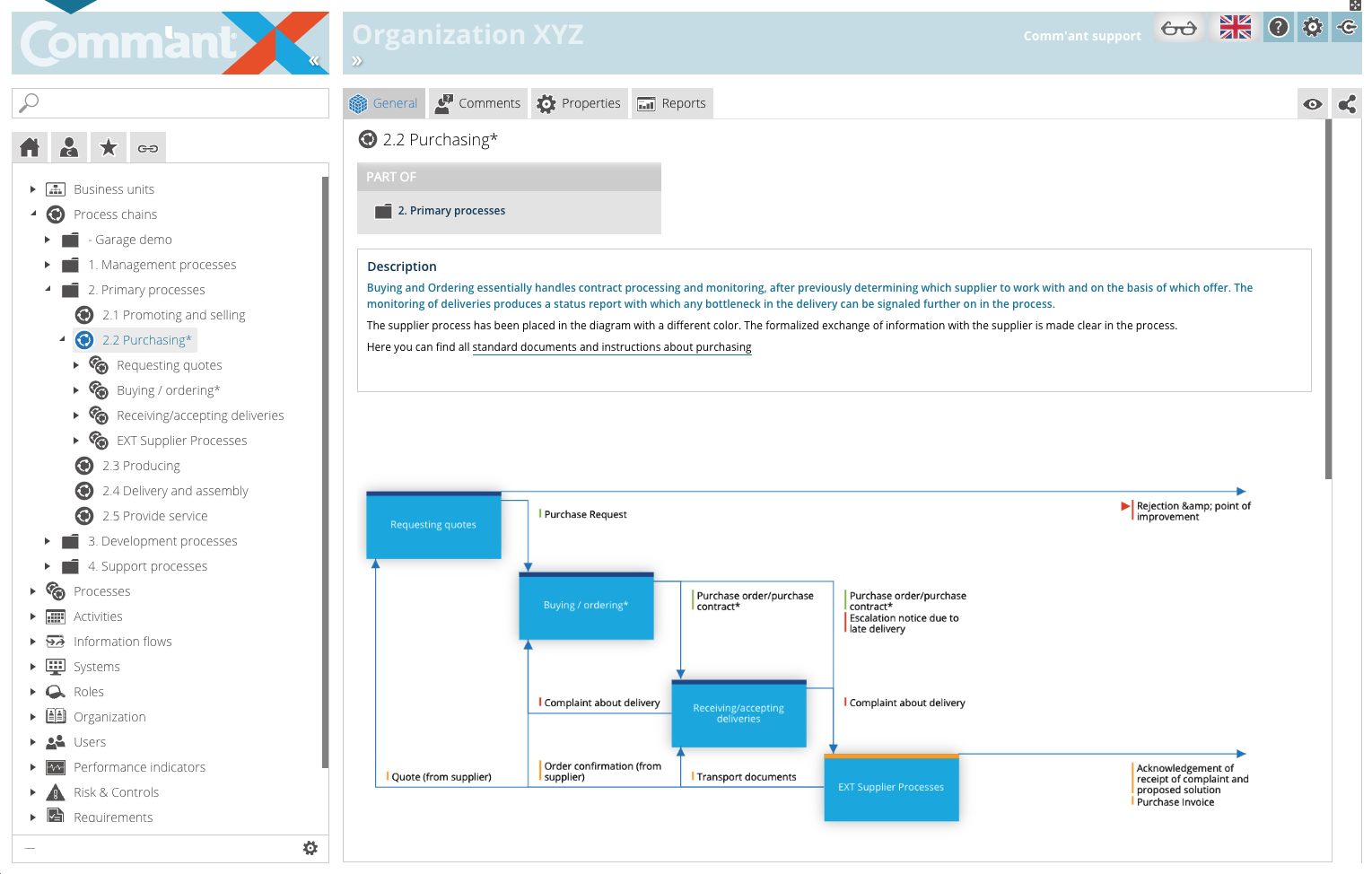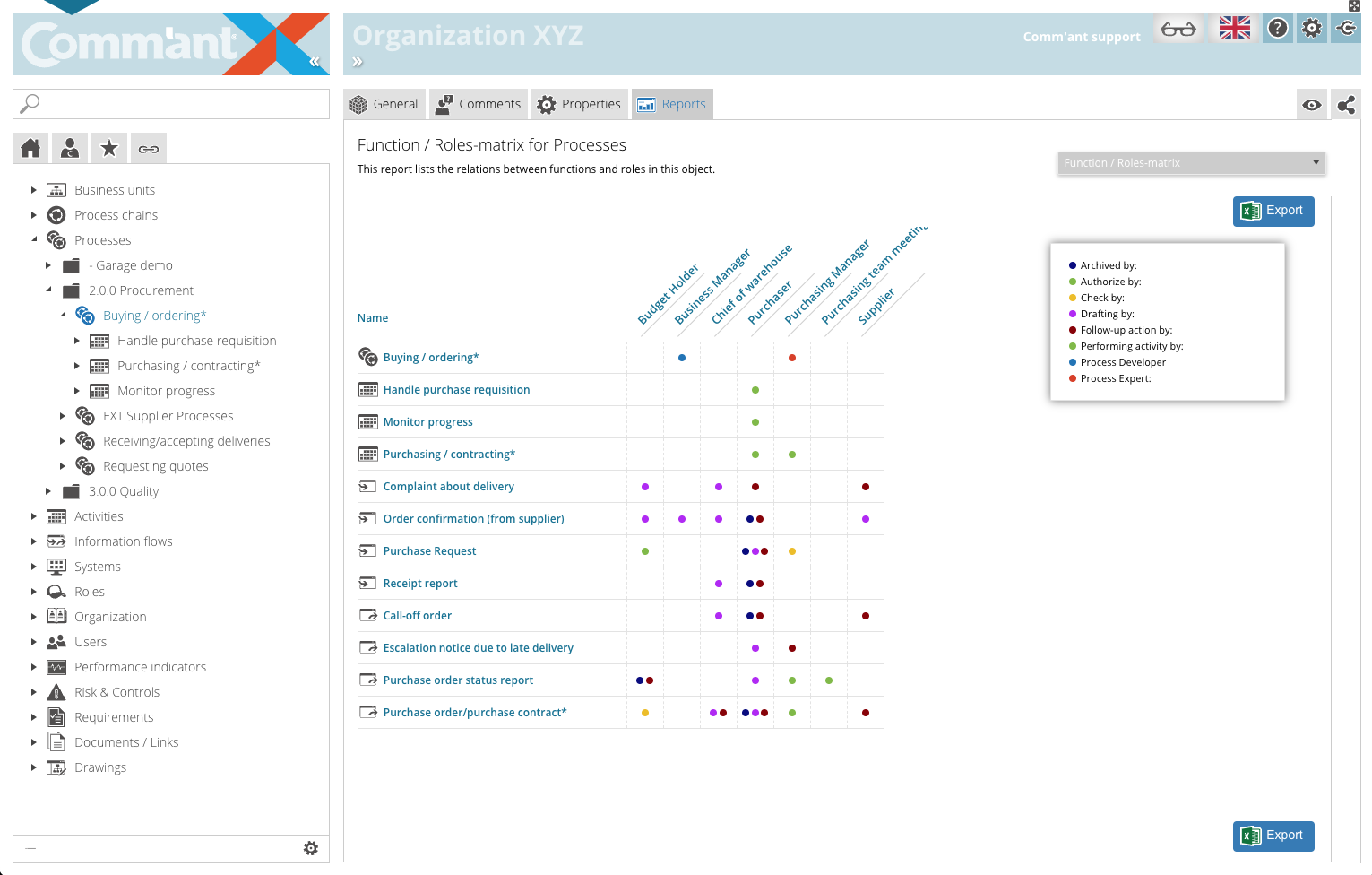Smart software..
smart collaboration
Comm'ant Process designing & controlling
Mapping out and streamlining business operations and processes has never been easier. With the integral Result-driven Process Model (iRPM) and the Comm’ant software, you can consult and edit your management system any-place & any-time, so your employees are always up-to-date on the agreements. With the handy communication functions, actively informing about improvements and changes is a piece of cake.
Process chains bundel
Putting several processes together creates the main process chain.
The main process represents the chain of processes and shows the communication between processes at a glance. The process result (as output) is usually again input for a next process. On a high abstraction level, the chain becomes visible, ideal for managers who want to oversee the entire chain.
The Comm’ant system automatically creates dynamic links and allows everyone to see the consequences of a change immediately.
Processes detailed
Processes provide more detail on how something is done and more importantly, what is accomplished. Process descriptions in Comm’ant are structured according to the SIPOC model.
SIPOC stands for
- Supplier
- Input
- Process
- Output
- Customer
With this model, not only the activity to be performed is visible, it is important that the sender (where does the required input come from) and the customer (where does the output, the process result, go) are also visible.
In- and output connect
Input and output are parts of the process. A small difference in process but a big difference for the result. And this difference is exactly the most important thing about Comm’ant, because where most process description software stops, Comm’ant goes further.
In the SIPOC model, in addition to the activity (execution), attention is given to the result. It is much more important to know the output, the result. Individuals who are part of the process know exactly what their output must meet. This increases the chance that the output always meets the set requirements and quality many times over.
Jobs & roles work together
By describing processes it becomes clear to everyone how business is organized: from beginning to end.
With the visual description it is nice to also name the functions and roles. That way every person knows what role he or she fulfills in a process and what is expected of them.



